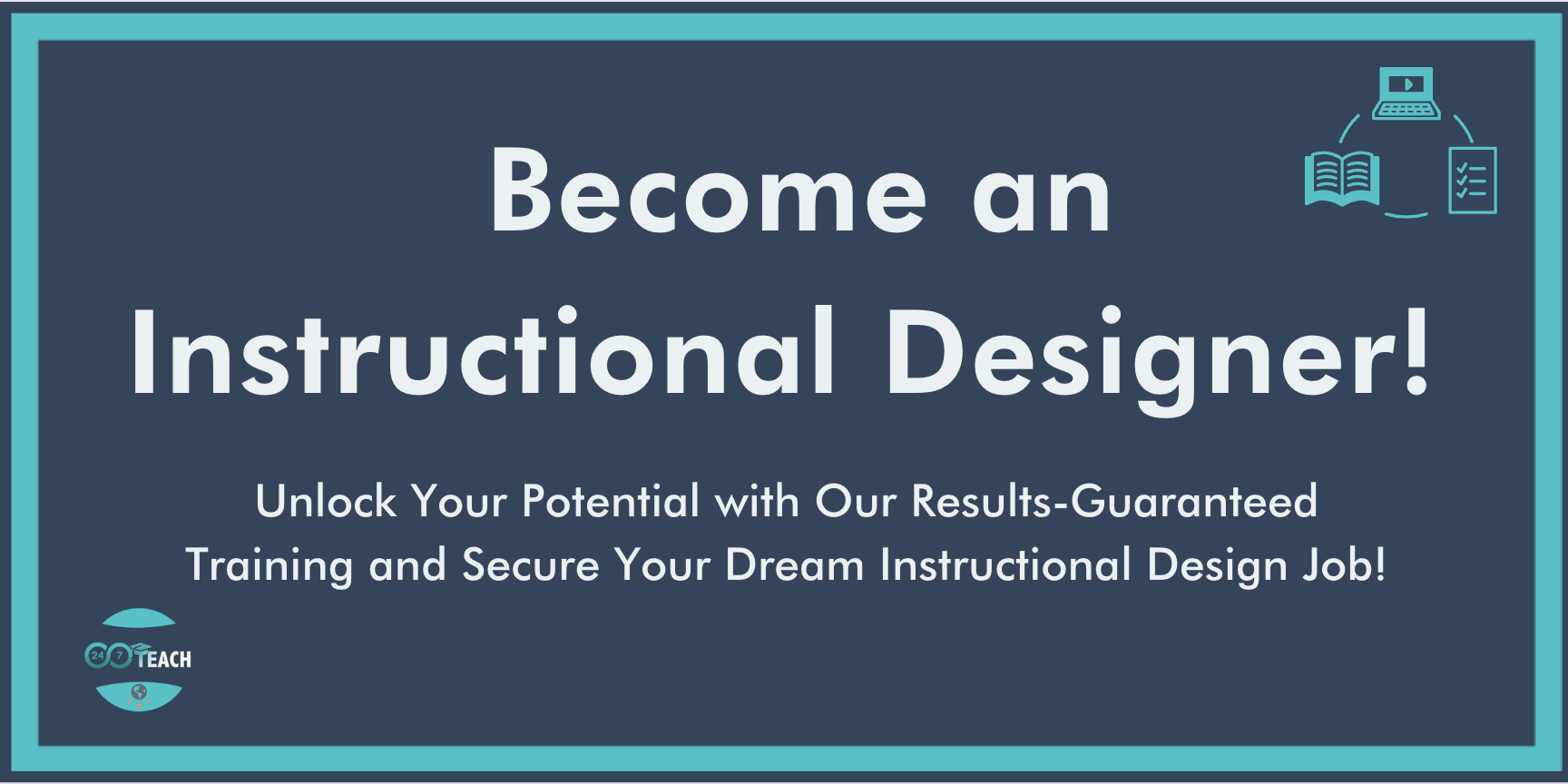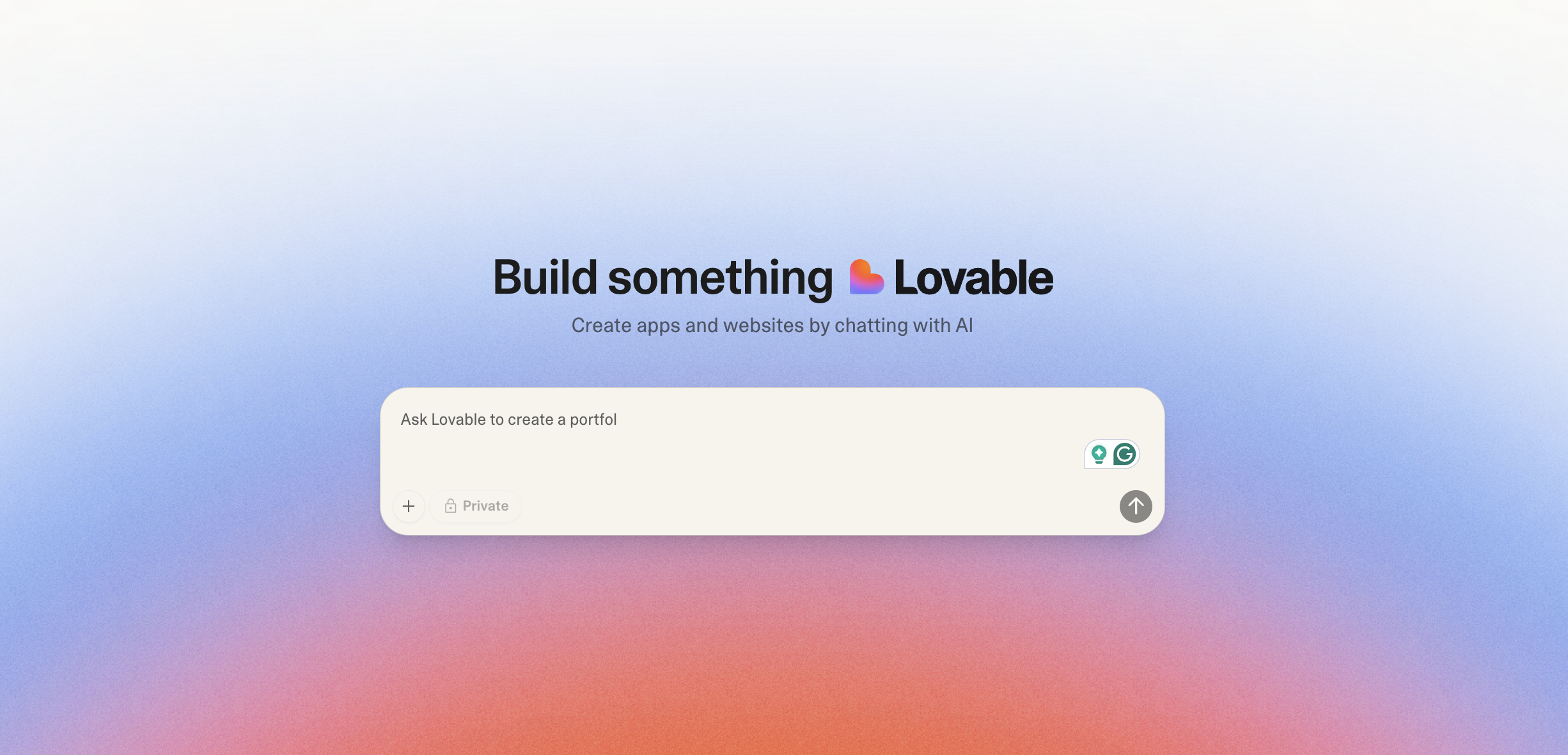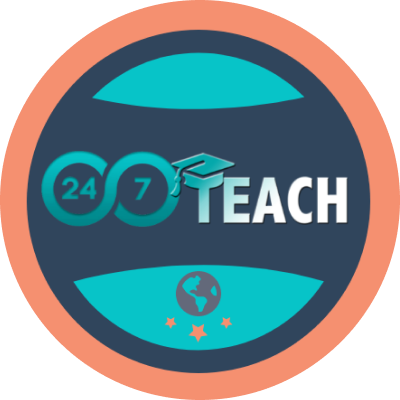Mastering Instructional Design Interviews with the STAR, SOAR, and CAR Methods:
By Justice Jones
Lead Instructional Designer and Trainer
Prefer to listen to this post? Click below.
Instructional Design Interviews with the STAR, SOAR, and CAR Methods:
Interviewing for an instructional design role can be daunting, especially when aiming to demonstrate your expertise and alignment with potential employers' needs. While many candidates rely on the well-known STAR method for crafting compelling answers, there are additional strategies that can enhance your interview performance.
This comprehensive guide explores the STAR method in-depth and introduces two other effective techniques: SOAR and CAR. These methods will equip you with a versatile toolbox for handling various interview questions, ensuring you can articulate your experiences and skills confidently and effectively.
Understanding the STAR Method
The STAR method is a structured approach to answering interview questions that require you to recount personal experiences. It stands for:
Situation: Describe the context within which you performed a task or faced a challenge.
Task: Explain the actual challenge and your responsibility.
Action: Detail the specific actions you took to address the challenge.
Result: Share the outcomes of your actions, emphasizing your contributions and what you learned.
This method is particularly effective for behavioral interview questions, which are designed to probe how you've handled various work situations in the past.
Example of the STAR Method:
Imagine you're asked: "Tell me about a time when you had to optimize a training experience for adult learners."
An effective STAR response might be:
"In my previous role at 24/7 Teach, I was tasked with redesigning the midyear performance review training for managers. The existing training was a 30-minute voice-over PowerPoint that was ineffective. After conducting a thorough needs analysis through surveys and interviews, I identified a lack of on-demand resources as a core issue. To address this, I developed a blended training solution with an Slack resource hub and an interactive eLearning course featuring branching scenarios for handling performance reviews. This approach aligned with adult learning principles and significantly improved the effectiveness of our training, evidenced by a 30% increase in leader preparedness and an 18% rise in positive employee feedback on performance reviews."
Introducing SOAR and CAR Methods
While STAR is invaluable, other methods like SOAR and CAR provide alternative frameworks for structuring your responses, giving you flexibility based on the question or the specific examples you wish to highlight.
SOAR Method:
Situation: Set the scene for the story.
Objective: Describe your goals in that situation.
Action: Detail the steps you took to achieve your objectives.
Result: Highlight the outcomes, focusing on achievements and lessons learned.
The SOAR method is a strategic approach that can be particularly effective in instructional design interviews, especially when discussing projects or initiatives where strategic planning, goal setting, and outcomes are critical. It allows candidates to showcase their ability to execute tasks, think strategically, and align their actions with broader organizational objectives. Below, we delve deeper into each component of the SOAR method and provide detailed guidance on how to employ this strategy in interviews effectively.
*Note: SOAR is particularly useful for questions that probe into goal-oriented projects or initiatives where your strategic thinking needs to be showcased.
Detailed Breakdown of SOAR
Situation: Begin by setting the context for your story. This should provide a clear backdrop that helps the interviewer understand the environment and the initial conditions you worked under. It's important to be concise but informative, ensuring the situation is relevant to the question.
Objective: This is where you define your goals or the intended outcomes of your initiative. Objectives should be specific and measurable when possible and clearly aligned with the organization's or project's needs. This shows that you're not just a task-oriented professional but also a goal-oriented strategist.
Action: Describe the specific actions you took to meet your objectives. This should go beyond just listing tasks; delve into the rationale behind each decision and action. Highlight your problem-solving skills, creativity, and ability to innovate or adapt as necessary. This part should clearly connect how your actions were designed to achieve the objectives.
Result: Conclude with the results of your actions. Emphasize the project's success through quantifiable achievements, improvements, or lessons learned. This section is your opportunity to showcase the impact of your work and your capacity to drive positive change within an organization.
Example of Using the SOAR Method in an Instructional Design Interview
Question: "Can you discuss a project where you had to develop a training program that aligned with corporate goals?"
Response using SOAR:
Situation: When I started at 24/7 Teach, the company was initiating a shift towards AI digital education platforms aimed at enhancing global access to quality education. This strategic pivot required comprehensive training for our teams to implement effectively and these platforms effectively.
Objective: The goal was to develop a training program that equipped team members with the necessary skills and knowledge to support and promote AI digital education tools. Additionally, the program aimed to align with the company’s broader mission of expanding educational access and improving learning outcomes across diverse demographics.
Action: I spearheaded the design of a blended learning program that combined online modules with live workshops to cater to different learning styles and schedules. I incorporated real-world scenarios and interactive elements such as simulations and role-playing exercises to ensure engaging and practical content. Collaboration with the digital strategy and content teams was crucial to ensure that the training materials reflected current trends and technologies in digital education.
Result: The training program was deployed to over 800 employees globally and received highly positive feedback for its interactive design and relevance to job functions. Post-training evaluations showed a 40% increase in staff proficiency with digital tools, significantly enhancing our ability to launch and maintain new educational platforms. This advancement supported 24/7 Teach’s mission by improving our capacity to deliver high-quality digital education, leading to a measurable increase in user engagement and satisfaction across our platforms."
Tips for Employing the SOAR Method:
Tailor Your Responses: Customize your SOAR response to highlight skills and experiences most relevant to the job you're applying for. Each element of SOAR should reinforce why you are the ideal candidate for the position.
Quantify Your Impact: Whenever possible, use data to quantify the impact of your actions. Specific figures and outcomes can make your contributions more tangible and memorable to interviewers.
Reflect on Learnings: Always include insights or lessons learned through the experience. This shows your capacity for growth and adaptability—key traits in the ever-evolving field of instructional design.
By utilizing the SOAR method effectively, you can demonstrate your competency in instructional design, strategic thinking, and ability to achieve significant outcomes. This method provides a robust framework for showcasing your professional depth and aligning your past experiences with the potential employer's objectives.
SOAR Example:
Question: "How do you approach a new eLearning project?"
Response: "At my last position, I was responsible for developing a compliance training program from scratch. The objective was to ensure 100% employee completion with high knowledge retention. I collaborated with subject matter experts to create engaging and informative content using multimedia and interactive quizzes. As a result, we achieved a 95% completion rate within the first month of rollout and received excellent feedback on the training's engagement and clarity."
CAR Method:
Context: Provide background for the scenario.
Action: Explain what actions you took.
Result: Describe the result of your actions.
This method is simpler than STAR and SOAR and is effective for more straightforward questions where a detailed task description isn't as necessary.
Exploring the CAR Method for Instructional Design Interviews:
In addition to the STAR and SOAR methods, the CAR (Context, Action, Result) technique offers a streamlined approach to formulating interview responses, which is especially useful for less complex questions or when time is limited. This method helps candidates clearly outline their contributions to a project or task, focusing primarily on their actions and the outcomes. Let's delve deeper into each component of the CAR method and discuss how to use this strategy effectively in your interviews.
Detailed Breakdown of CAR:
Context: Provide the background or setup for your story. This is typically shorter than the situation set up in STAR or SOAR, as CAR emphasizes more on what you did and the results. The context should be enough to frame your actions clearly.
Action: This is the core of your response. Detail the specific actions you took to address the situation described. It’s crucial to focus on what you personally did, highlighting your skills, decision-making processes, and direct contributions.
Result: Conclude by describing the outcomes of your actions. Emphasize how your actions led to positive changes, improvements, or lessons learned. This part should quantify your impact when possible, offering clear evidence of your effectiveness.
Example of Using the CAR Method in an Instructional Design Interview
Question: "Describe a time when you had to adapt a course quickly due to unforeseen circumstances."
Response using CAR:
Context: At 24/7 Teach, two weeks before the launch of a major course, we encountered technical issues that threatened to delay the rollout, affecting hundreds of learners expected to start.
Action: I took immediate charge by organizing a rapid response team comprising IT, content developers, and user experience designers. We worked collaboratively to identify alternative hosting options and adjusted content for compatibility with a more robust platform. I personally oversaw the migration to ensure all interactive elements functioned smoothly.
Result: Our quick adaptation prevented any delay in course deployment. The course launched on schedule, and feedback from learners highlighted the seamless functionality and user experience. This incident not only maintained our reliability but also improved our team's readiness for handling similar challenges in the future, reducing potential downtime by 30%."
Tips for Employing the CAR Method
Emphasize Personal Involvement: When using CAR, ensure that the focus is on your specific actions. This method is particularly effective in situations where your individual contribution was clear and impactful.
Keep It Concise: CAR is ideal for delivering compact, impactful stories during tight interview schedules. Make sure each element of your response is direct and to the point.
Highlight Measurable Results: Whenever possible, quantify the outcomes of your actions. This could be regarding efficiency gains, user satisfaction scores, or other relevant metrics. Concrete results resonate well in interviews and make your achievements more tangible.
Adapt Flexibly: While CAR is simpler than STAR and SOAR, it's as effective when used appropriately. It’s particularly useful for straightforward questions where you must demonstrate your impact quickly without extensive backstory.
By integrating the CAR method into your interview strategy, alongside STAR and SOAR, you equip yourself with versatile tools for articulating your experiences and successes. Each method serves different questions and interview dynamics, allowing you to navigate various scenarios confidently.
The differences between STAR, SOAR, and CAR methods:
The STAR, SOAR, and CAR methods each offer structured approaches to interview responses but serve slightly different purposes based on the depth and focus of the questions asked. The STAR method (Situation, Task, Action, Result) is comprehensive and ideal for detailed storytelling where showcasing problem-solving and outcomes is essential. It is best used for behavioral questions that require examples of past work experiences.
On the other hand, SOAR (Situation, Objective, Action, Result) emphasizes strategic thinking and goal orientation, aligning closely with questions about project management or leadership roles where the objective and the approach play a critical role in determining project success.
Lastly, the CAR method (Context, Action, Result) is more succinct, focusing primarily on the actions taken and the results achieved. This method is particularly effective for straightforward scenarios where a quick demonstration of impact and outcome is necessary, making it ideal for interviews with tight time constraints or for less complex questions. Each method has its strengths, and choosing the right one depends on the specific question and the depth of response required.
Conclusion
By mastering the STAR, SOAR, and CAR methods, you will be better prepared to handle various interview questions effectively. These frameworks help organize your thoughts and ensure you present a concise, clear narrative highlighting your qualifications and readiness for the instructional design role. Remember, the key to successful interview responses lies in adapting these frameworks to your unique experiences showcasing your skills and achievements in the best possible light.
Discussion Question:
Join the conversation and participate with the 24/7 Instructional Design community by answering the DQ in the comment section below:
How might you choose between using the STAR, SOAR, and CAR methods depending on the type of interview question or scenario you are faced with? Share an example from your experiences where one method might have been more effective, and explain why.
Assignment: Selecting the Right Instructional Design Tools
Objective:
This assignment aims to help you identify and select appropriate instructional design tools for different types of eLearning projects. You will evaluate the project requirements and determine which tools best suit each scenario based on their functionalities and your understanding of their strengths and limitations.
Instructions:
Identify the most suitable instructional design tools for the three sample projects described below. Provide a rationale for your choices, considering the project requirements, target audience, learning objectives, and other relevant factors.
Project 1: Corporate Compliance Training
Description:
Your organization needs to develop a compliance training module for employees. The training should include multimedia elements such as videos, interactive quizzes, and scenarios. It must be accessible on both desktop and mobile devices and allow for learner progress and performance tracking.
Requirements:
Multimedia integration (video, audio, graphics)
Interactive quizzes and scenarios
Mobile compatibility
Progress tracking and reporting
Task:
Identify the most suitable content authoring tool(s) for creating the compliance training module.
Suggest any additional tools needed for video creation, graphic design, and progress tracking.
Provide a rationale for your choices.
Project 2: University Online Course
Description:
You are tasked with developing an online course for a university's psychology program. The course should include recorded lectures, interactive discussions, assignments, and assessments. It should be engaging and interactive, providing a mix of multimedia content and opportunities for student collaboration.
Requirements:
Recorded lectures and presentations
Interactive discussions and forums
Assignments and assessments
Multimedia content (videos, graphics)
Collaboration tools
Task:
Identify the most suitable learning management system (LMS) for hosting the online course.
Suggest additional tools for recording lectures, creating multimedia content, and facilitating interactive discussions.
Provide a rationale for your choices.
Project 3: Language Learning App
Description:
Develop a language learning app with interactive lessons, quizzes, and voice recognition for pronunciation practice. The app should offer a personalized learning experience, adapting to the learner's progress and performance. It must be user-friendly and visually appealing.
Requirements:
Interactive lessons and quizzes
Voice recognition for pronunciation
Personalized learning paths
User-friendly interface
Visually appealing design
Task:
Identify the most suitable tools for creating interactive lessons and quizzes.
Suggest additional tools for voice recognition, personalization, and user interface design.
Provide a rationale for your choices.
Submission:
Submit your assignment as a short report detailing your tool selections and rationale for the three sample projects in the comments section below. Ensure all the requirements are addressed and explain why each tool was chosen. Include any relevant screenshots or references to support your choices.
Discussion Question:
Join the conversation and participate with the 24/7 Instructional Design community by answering the DQ in the comment section below:
How might you choose between using the STAR, SOAR, and CAR methods depending on the interview question or scenario you are faced with? Share an example from your own experiences where one method might have been more effective than the others, and explain why.
Need Guidance on Navigating the Shift to Instructional Design?
Before You Go...
Discover the Unmatched 24/7 Teach Experience:
Our Instructional Design bootcamps and career coaching services have a 100% success rate. We redefine learning by immersing you in practical, hands-on projects, ensuring you acquire vital professional expertise while making a meaningful difference in your community.
Unlock your true potential today with 24/7 Teach and invest in your future.











